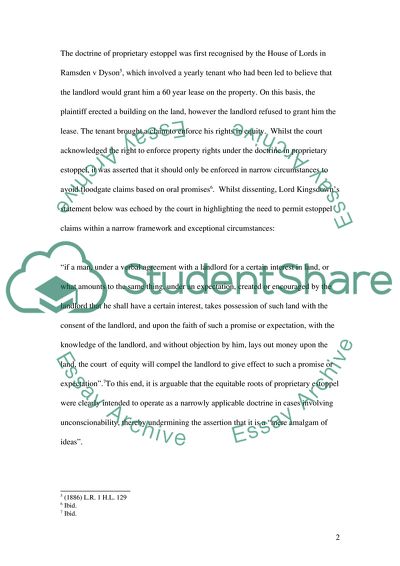Cite this document
(“The Edge of Land Law Lies Proprietary Estoppel Essay”, n.d.)
The Edge of Land Law Lies Proprietary Estoppel Essay. Retrieved from https://studentshare.org/social-science/1550140-critically-analyse-and-assess-this-statement-see-assessment-criteria-the-word-count-was-too-small-here-with-paricular-regard-to-recent-academic-commentary-and-modern-case-law
The Edge of Land Law Lies Proprietary Estoppel Essay. Retrieved from https://studentshare.org/social-science/1550140-critically-analyse-and-assess-this-statement-see-assessment-criteria-the-word-count-was-too-small-here-with-paricular-regard-to-recent-academic-commentary-and-modern-case-law
(The Edge of Land Law Lies Proprietary Estoppel Essay)
The Edge of Land Law Lies Proprietary Estoppel Essay. https://studentshare.org/social-science/1550140-critically-analyse-and-assess-this-statement-see-assessment-criteria-the-word-count-was-too-small-here-with-paricular-regard-to-recent-academic-commentary-and-modern-case-law.
The Edge of Land Law Lies Proprietary Estoppel Essay. https://studentshare.org/social-science/1550140-critically-analyse-and-assess-this-statement-see-assessment-criteria-the-word-count-was-too-small-here-with-paricular-regard-to-recent-academic-commentary-and-modern-case-law.
“The Edge of Land Law Lies Proprietary Estoppel Essay”, n.d. https://studentshare.org/social-science/1550140-critically-analyse-and-assess-this-statement-see-assessment-criteria-the-word-count-was-too-small-here-with-paricular-regard-to-recent-academic-commentary-and-modern-case-law.


